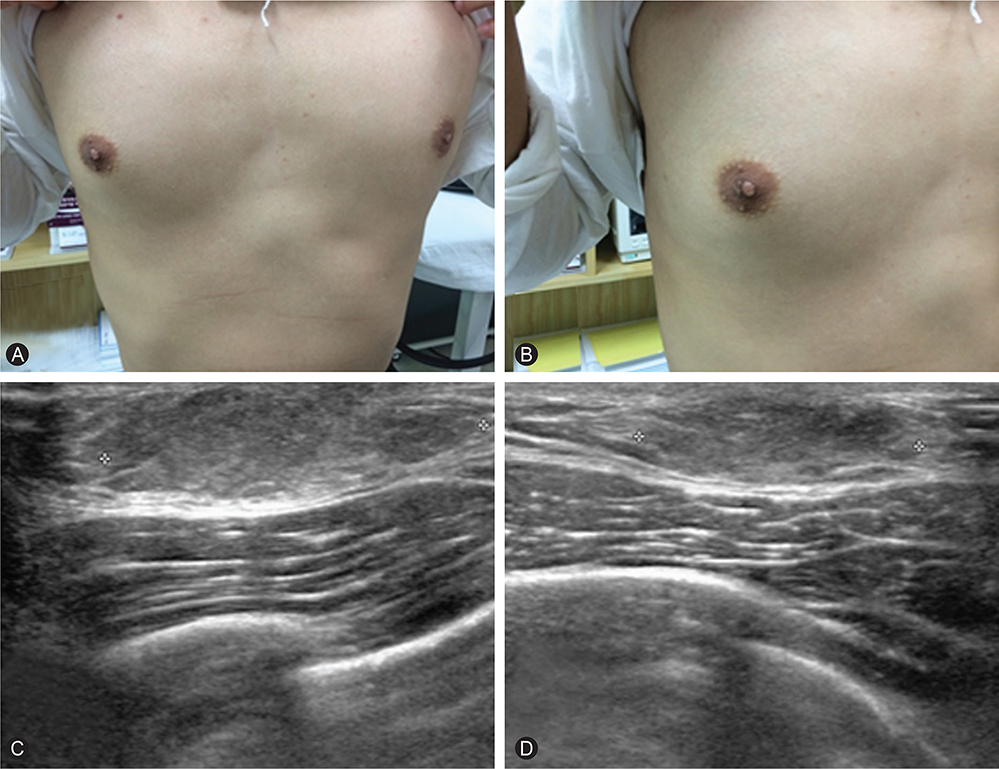Asia Pac Allergy.
2015 Jul;5(3):187-190. 10.5415/apallergy.2015.5.3.187.
Gynecomastia induced by H1-antihistamine (ebastine) in a patient with idiopathic anaphylaxis
- Affiliations
-
- 1Department of Internal Medicine, Ulsan University Hospital, University of Ulsan College of Medicine, Ulsan 682-714, Korea. ddol1996@hanmail.net
- KMID: 2397050
- DOI: http://doi.org/10.5415/apallergy.2015.5.3.187
Abstract
- H1-antihistamine is generally a well-tolerated and safe drug. However, in resemblance with all other drugs, H1-antihistamines can also prompt adverse drug reactions (ADRs). We recently encountered the very unusual ADR of H1-antihistamine-induced gynecomastia. A 21-year-old man with idiopathic anaphylaxis was treated with ebastine (Ebastel), a second-generation H1-antihistamine, for the prevention of anaphylaxis. Three months later, the patient remained well without anaphylaxis, but had newly developed gynecomastia. Because anaphylaxis recurred after the cessation of H1-antihistamine, the preventive medication was changed to omalizumab. A few months later, his gynecomastia had entirely disappeared. Physicians should be aware of this exceptional ADR of H1-antihistamine.
Keyword
MeSH Terms
Figure
Cited by 1 articles
-
The sticky relationship between allergies and infections
Jiu-Yao Wang
Asia Pac Allergy. 2015;5(3):133-135. doi: 10.5415/apallergy.2015.5.3.133.
Reference
-
1. Simons FE. Advances in H1-antihistamines. N Engl J Med. 2004; 351:2203–2217.
Article2. Simons FE, Simons KJ. Histamine and H1-antihistamines: celebrating a century of progress. J Allergy Clin Immunol. 2011; 128:1139–1150.e4.
Article3. Scadding GK. Clinical assessment of antihistamines in rhinitis. Clin Exp Allergy. 1999; 29:Suppl 3. 77–81.
Article4. Braunstein GD. Clinical practice: gynecomastia. N Engl J Med. 2007; 357:1229–1237.5. Gikas P, Mokbel K. Management of gynaecomastia: an update. Int J Clin Pract. 2007; 61:1209–1215.
Article6. Cuhaci N, Polat SB, Evranos B, Ersoy R, Cakir B. Gynecomastia: clinical evaluation and management. Indian J Endocrinol Metab. 2014; 18:150–158.7. Louis MP, Heran I, Peyriere H, Blayac JP, Hillaire-Buys D. Two cases of gynaecomastia with cetirizine, a second-generation antihistamine. Therapie. 2004; 59:163–164.
Article8. Bowman JD, Kim H, Bustamante JJ. Drug-induced gynecomastia. Pharmacotherapy. 2012; 32:1123–1140.
Article


